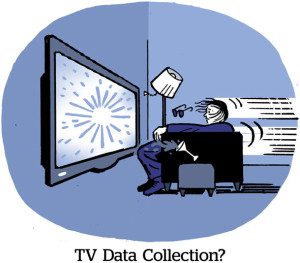TV measurement is migrating from traditional sample-based systems to solutions built on big data.
In other words, measuring TV audiences is becoming an incredibly complicated task, and almost no one knows that better than members of the Coalition for Innovative Media Measurement (CIMM).
Earlier this year, CIMM Managing Director Jon Watts enlisted two experts from opposite sides of the ecosystem – Josh Chasin and Albert Lau – to collaborate on a report that analyzes the main components of big data-based currency models and offers tips for how to understand the difference between them.
Chasin, now a consultant, has held a C-suite position at Comscore and more recently at VideoAmp, including as its former chief measurability officer. Albert Lau has worked in analytics-related and director-level roles at Annalect, Omnicom and DirecTV.
“I was the person who was hawking the audience measurement solution, and Al was the person who was scrutinizing the audience measurement solution,” Chasin tells me. “It was an interesting approach to have us bring these two perspectives together.”
Identity politics
Their report has an ambitious title – “Solving Today’s Evolving Measurement Puzzle” – and it paints a fascinating (albeit somewhat dense) picture of how things have changed since the early days of the sample-based system, when measuring TV audiences was closer to market research than data science.
According to Chasin and Lau, there are six main methodological challenges facing the TV measurement industry:
- Assessing the impact of identity
- Addressing bias, such as geographic and demographic skews
- Onboarding, cleaning and combining big data assets
- Getting the metadata right
- Integrating linear and streaming data together and deduplicating reach across platforms
- And addressing coverage gaps in data sets, like handling households without Wi-Fi
But out of all of these, Chasin says, figuring out the role that identity should play within data is the most important.
With sample-based measurement, identity wasn’t an issue because measurement companies like Nielsen already knew exactly who they were recruiting to be in their panels. But now, figuring out the demographic details of huge data sets is much harder and requires the use of identity graphs to make sense of it.
“You’ve got set-top box data and smart TV data, but now you have to glue it to a spine to get any value out of it,” says Chasin. “We overlooked for a couple of years how important the quality of that spine is to making the data come alive.”
Poor-quality identifiers, he says, can lead to poor match rates or errors regarding household demographics, which also makes it tougher to reliably reach diverse populations of viewers.
But it’s also important to make sure the metadata associated with digital TV data collection is correct, particularly where smaller details like airdates are concerned.
For example, Lau says, not every state changes its clocks for daylight saving time, and measuring viewership in the two states that don’t – specifically, Arizona and Hawaii – would require adjustments to ensure accuracy.
“These are little issues, but they have larger implications,” he notes.
Future considerations
How best to solve these challenges? It’s hard to say, but one thing is clear: the need for better and updated industrywide standards. The industry has been slow to adopt anything in that vein.
“You need to have some financial incentive for people to move, and I think there isn’t enough right now,” Lau says. “Nobody has stepped up and created enough financial incentive to make changes.”
But that could change if collaborative organizations like the JIC, a broadcaster-backed joint industry committee committed to certifying alternative currencies, can prove the value of sharing information “that all of the providers can take advantage of,” according to Chasin.
“You’ve got at least three companies there that are new to the currency space,” adds Chasin, referring to VideoAmp, Comscore and iSpot. “And the industry, I think, wants there to be shared assets to facilitate each of them evolving.”
Questions? Comments? Concerns? Lob ‘em at [email protected].


















